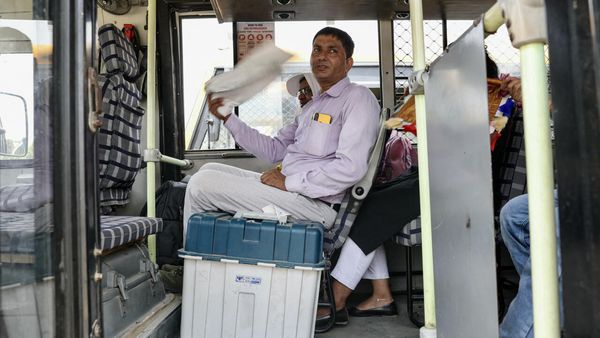
One big fight in this budget is going to be whether the government’s policies to reduce inflation are legitimate.
They’ve “mechanically” reduced consumer price inflation via two policies: the $300 energy bill relief and increases to Commonwealth rent assistance. Together these spending measures “directly reduce headline inflation by ½ of a percentage point in 2024–25,” the budget papers say.
Normally we fight inflation economy-wide and do so indirectly, via monetary policy and Keynesian policies that reduce spending overall. But in this case, the government is sticking its spanner right into what the Bureau of Statistics measures when it measures inflation. They’re literally cutting prices. Is that allowed?
Is reducing inflation by reducing prices a cynical sin? Or the wise action of a government that understands how the economy actually works?
You’re going to hear the former a lot. Most aghast may be George Washington University Assistant Professor Steven Hamilton. He’s an Aussie and always says the only legitimate way to reduce inflation is to cool the entire economy, and anything that boosts aggregate demand is always going to cause more problems than it solves. He’s got an incendiary piece in the Financial Review already and I bet his quotes pop up in the media a lot over the next few days.
Cool the jets
Certainly cooling the whole economy is how the RBA works. It works to reduce prices indirectly: taking money from people who might spend it, so those people spend less, so businesses are quieter and raising prices risks leaving them with no customers at all. It’s a circuitous route but one we economists rely on most of the time. It’s certainly an appropriate path for doing much of the heavy lifting.
But is it the only appropriate path? I’m going to lay out two big arguments for why targeted subsidies can be legitimate, even if they’re not costless.
- They’re really fast. You can reduce prices via legislative fiat right now. That means you can hit price rises on the head when you really need to. I don’t dispute that if you give a consumer a saving they might spend more elsewhere, but usually that doesn’t create an immediate price rise in that other industry. There are lags.
Even if all you get is less inflation now at the price of a bit more later, that can be very valuable. You have smoother inflation over time, and inflation that is more stable over time is valuable. Markets, and households, fear volatility.
- Not all industries are equal. In some places the economy is right up at capacity and more spending does indeed generate big price hikes. E.g. If we try to build more houses right now, prices for tradies will rise. In other areas, we can spend more without lifting prices. E.g. imports of commodities from global markets where a bit more demand from Australia doesn’t affect the price.
If you reduce consumer prices in a local industry and shift spending to an import industry, you might reduce overall inflation in a given period. Notably, both rents and electricity are domestic industries. If people spend less on those and more on cars, petrol or holidays, it could reduce total inflation.
Relief at the bowser
A controversial recent example of reducing inflation at the stroke of a pen is the petrol tax cut Josh Frydenberg introduced at the March 2022 Budget. He reduced petrol prices by 22 cents a litre. At the time I thought it was a cynical re-election ploy, and… I still think that. But in retrospect, I have added an additional view, which is that it also helped reduce measured inflation in that period and reduced the cost burden on families. Which was helpful.
When Labor let the measure lapse, inflation went back up. Which was unhelpful, increasing the cost burden on families and adding to pressure on the RBA to act. In the circle on the next graph, annual fuel CPI is being compared against the excise cut period, and so is higher than it would otherwise be. That’s mid-2023, a period where the RBA hiked rates several times.
We got a lower peak in fuel inflation between the lines, which was good, but could have had a fall afterwards had the government not let the 22-cent tax be reinstated.
Revenue was soaring up anyway so the new Labor government could have foregone the excise dollars flowing into their coffers. If inflation is self-perpetuating — and it sure looks that way, since our inflation was in imports but is now in locally-produced services — then a lower rate of imported inflation earlier in the crisis may have caused less domestic inflation later.
Shane Wright in the Nine papers makes the case that a similar effect is precisely what the government is aiming to produce here. By mechanically pushing inflation back into the target range now, the government prevents any wage claims at very high levels. Unions planning to ask for 5% wage rises to compensate for 4% inflation will have to reduce their ask if inflation is indeed 2.75% at the end of this year, as the government forecasts. Stomping on inflation now, even at the cost of upsetting a few economic dogmas, may be helpful in crimping any “wage-price spiral”.
You see this in the government’s own forecasts. Wage rises are expected to be quite modest, falling from 4% at the end of this financial year to 3.25% next year. At the same two time points the CPI is forecast to fall from 3.5% to 2.75%.
More like this?
Now, there are limits to this. It’s got to be a garnish. You can’t do the meat of inflation control via legislative fiat. I’m not saying the government should throw subsidies at everything and cut all taxes while the RBA does nothing. The cost to the budget bottom line would be crazy and the economy would run red hot underneath. Dogmatic types will take that to mean you should do none of the work of inflation-fighting like this. I don’t think that’s true either — ideas with a high cost when done at scale can have a low cost when done narrowly.
What would be sensible is planning and transparency so we know where and when the government might leap in with subsidies or tax cuts that address inflation, and the decision rules for when they’ll share the burden with the RBA. Doing a good thing in an ad hoc fashion is just grist to the mill of the doubters, from whom we will no doubt be hearing a lot soon.







